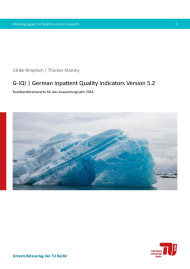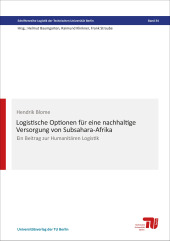G-IQI – German Inpatient Quality Indicators Version 5.2
Bundesreferenzwerte für das Auswertungsjahr 2018
Editor: Ulrike Nimptsch, Thomas Mansky

Size: 412 pages
Format: 21,0 x 29,7 cm
Publishing year: 2020
Format: 21,0 x 29,7 cm
Publishing year: 2020
Reihe: Working papers in health services research ; 3
ISBN 978-3-7983-3187-7The German Inpatient Quality Indicators (G-IQI) are the most comprehensive system of quality indicators based on administrative data. G-IQI allow a disease-specific monitoring of inpatient care in acute care hospitals. On the one hand, the indicators are designed to provide medically meaningful figures on hospital performance and outcomes for external users. On the other hand, the indicators serve as a tool for internal quality management and quality improvement in hospital care. The indicators may help hospitals to identify potential for improvement by comparing their own results with national figures. The indicators serve as triggers for peer reviews or morbidity and mortality conferences. Thus, the use of the indicators is essential to detect medical errors and to improve quality of care.
The present working paper contains the German national reference values of the year 2018 for the G-IQI version 5.2. Reference values were calculated by using the microdata of the national hospital statistics database (DRG statistics) and are displayed for each indicator. The technical specifications of the indicators are attached in the appendix of this paper and refer to the German coding systems valid in 2020. The G-IQI version 5.2 represents a modification and expansion of the previous version 5.1. In the year of analysis 2018, the present G-IQI version 5.2 captures 52.2% of all inpatient cases and 79.2% of all in-hospital deaths. Thereby, the G-IQI version 5.2 achieves one of the highest coverages among available quality indicator systems.
The national reference values of the indicators help hospitals to assess their own results as compared to national figures. Beyond that, the national reference values provide a comprehensive analysis of inpatient care in German acute care hospitals. In addition to the complete national indicator results, the age-and-sex specific mortality figures that are used to calculate expected deaths at the hospital level are displayed. Furthermore, distribution of case volume among hospitals is illustrated for selected indicators. By this means, the present working paper covers various figures, which are not published by any other statistics and, thus, complements other systems of health care reporting.



